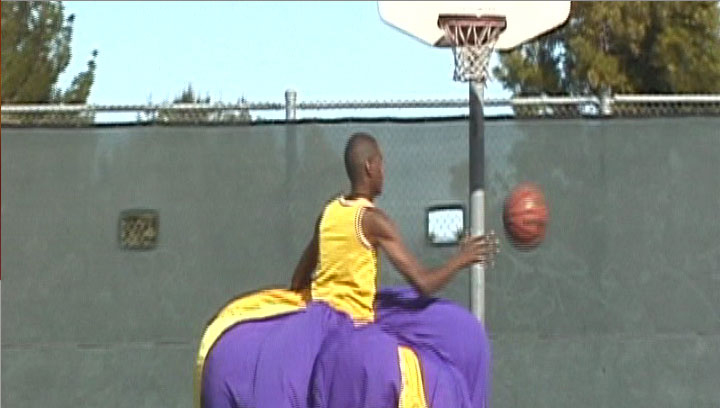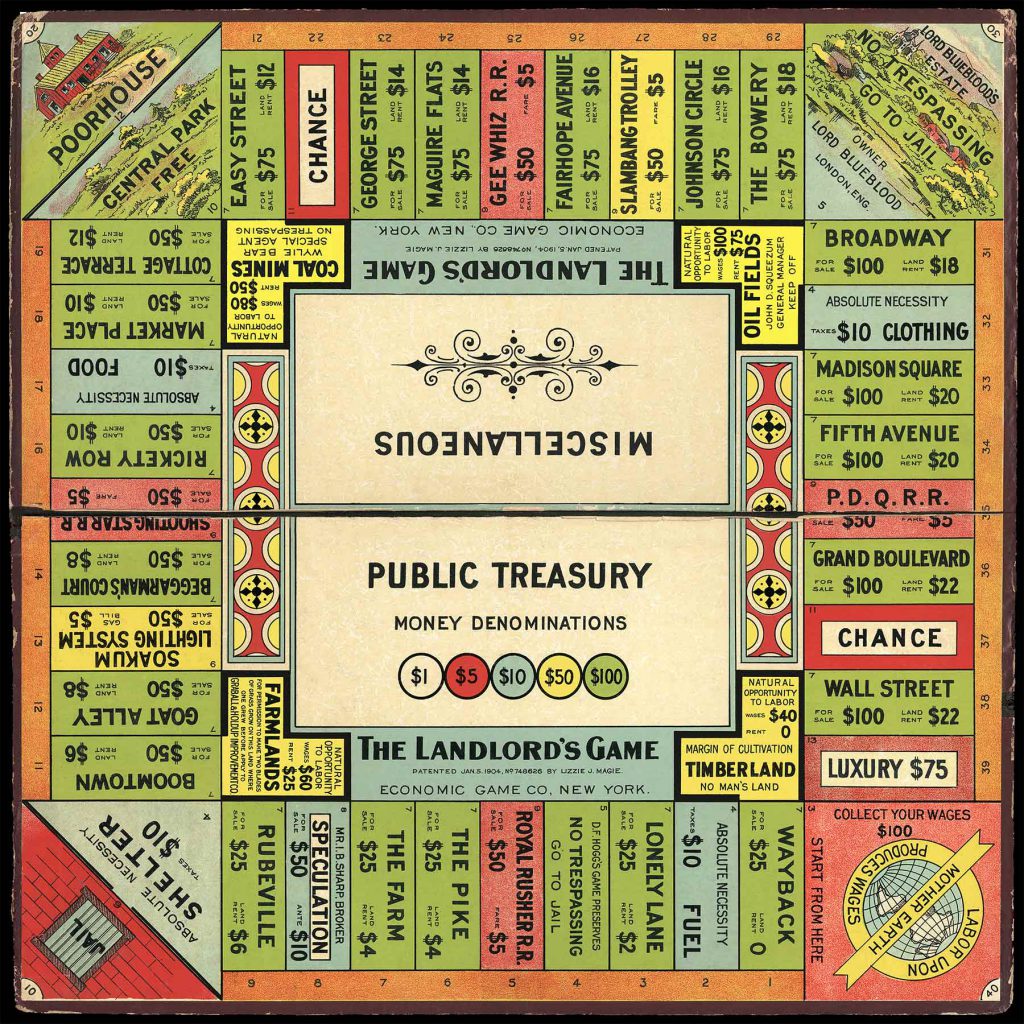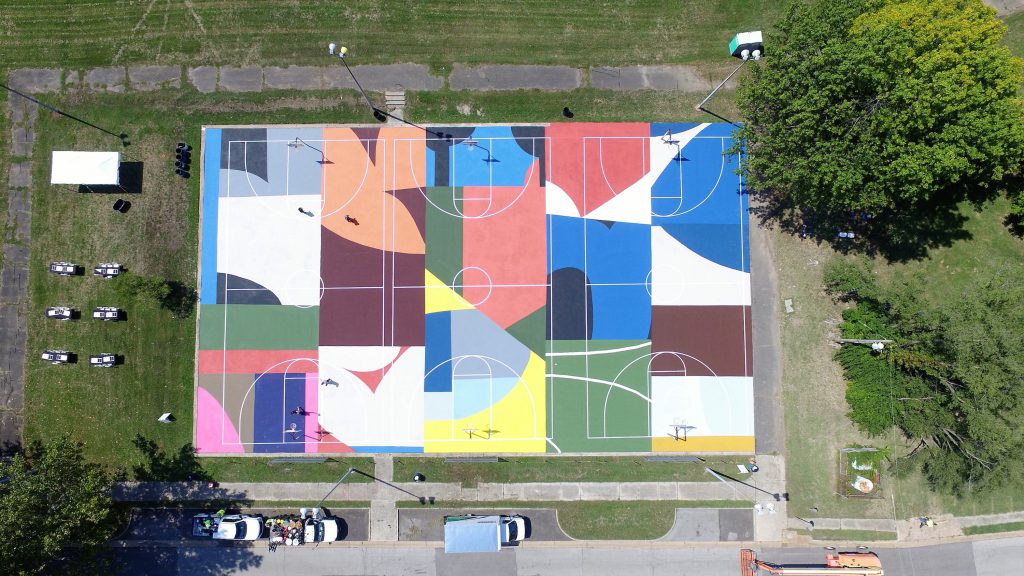In part 2 of her essay, scholar and activist Susana Morris extends her look at racial identity and play and reflects on the work of artist Mark Bradford. Missed part 1? Check it out here.
African-American artist Mark Bradford has an inspired take on the role of play. He specializes in large mixed-media collages that bring together a variety of ephemera from urban communities, from end papers used at black beauty salons, to flyers advertising everything from divorce court to DNA testing, to other seeming pieces of refuse, in new and innovative ways. This work disrupts commonplace definitions of “trash” and “art,” inviting the audience to consider alternative paradigms. Likewise, Bradford’s art installations and video projects tease out the connections between popular culture and so-called high art to trouble or perhaps even collapse the usual distinctions between the two genres. There is a running theme of a particular type of irreverence and playfulness in Bradford’s oeuvre.
What does it mean to celebrate and play in a state of surveillance?
In a 2007 video installation at the Los Angeles County Museum of Art, Bradford contrasts two events—the annual Martin Luther King Day parade in Los Angeles and a busy Muslim night market in Cairo. Both videos capture black and brown bodies at play. The video of the King Day parade shows cheerleaders and dancers celebrating the life and legacy of a slain civil rights leader; the scenes of the Cairo night market highlight the exclusive world of a Muslim-only night market complete with amusement park rides and street food. Yet, there is an important distinction between the two videos. While the Muslim carnival goers ride merry-go-rounds and eat sweets with their loved ones in peace, the MLK celebration happens amidst, or in spite of, a heavy police presence. Bradford notes, “I go to the parade every year. Certain details, you start to see over and over and over and over again, such as the policing. There’s as much policing of the parade as a parade. Every frame—and it’s not that I tried to put police in it, they were just in every frame.”7 So, the video invites us to consider, what does it mean to celebrate and play in a state of surveillance? As Bradford himself says, “To see so many black bodies in public space it’s always political.” Blacks existing and playing in public is a political act, a transgressive event. What might it mean if the black parade goers had a safe space like the Cairo night market? Would their play look different or hold a different meaning?
Bradford also troubles the line between playfulness and politics this in his video installation Practice (2003). In Practice Bradford appears onscreen on a basketball court, dribbling the ball and taking shots at the basket. He has also donned a Los Angeles Lakers jersey and pairs it with an incongruously large antebellum hoop skirt. The figure of Bradford playing basketball in a hoop skirt is a comical one, highlighting how impractical a hoop skirt is for any sort of athletic movement. He admits, “I wanted to create a condition, a struggle. I would create this huge antebellum hoop skirt out of a Laker uniform. My goal was to focus on dribbling the basketball and making the shot. But, obviously, when you have an antebellum skirt fanning out about four feet around you that’s going to be difficult. And it was an incredibly windy day, one of those Santa Ana, Southern California incredibly windy days where everything was blowing. What it created was this billowing of the wind. It would catch underneath the dress. It became almost like I was floating.”
It was about roadblocks on every level—cultural, gender, racial.
Both the outfit and the elements conspire against Bradford’s free movement, mimicking the structures that impede marginalized bodies daily. Hoop skirts and other restrictive gendered clothing styles have had the effect of restricting their wearer’s movements. How could a nineteenth-century woman, for example, play, run, or even walk quickly if she is wearing pounds of encumbering fabric? Simply put, she cannot. She is not meant for movement but rather she is ornamental, an object that is perhaps moveable but which does very little moving on its own accord. Yet Bradford does move and play in this ridiculous outfit, not unlike the participants of the MLK parade who play and celebrate despite the threat of police violence: “And I would fall and get up and I would make the shot sometimes, and I wouldn’t sometimes, and I would always get up.” There is something comically poetic about Bradford ambling about a basketball court, dribbling a ball, occasionally falling down, but always rising again to take a shot. This playful take on basketball represents a larger metaphor about transgressing boundaries. Bradford reveals, “It was about roadblocks on every level—cultural, gender, racial. Regardless that they’re there, it is important to continue. You keep going. You keep going, and so that’s what it was. And I made the hoop, I made the shot. I always make the shot. Sometimes it takes me a little longer to get there, but I always make the shot.” Ultimately, play for marginalized peoples, particularly black bodies, is not necessarily about complete freedom to do as they would like, but celebrating what our bodies can do despite very real obstacles. ♦
Return to part one of Susana Morris’s “Black Bodies at Play.”
7 This and the quotes that follow are culled from the following interview: https://art21.org/watch/art-in-the-twenty-first-century/s4/mark-bradford-in-paradox-segment.
Mark Bradford, Practice, 2003, video (3 minutes in length). Courtesy of the artist and Hauser & Wirth, Zurich, Switzerland.











